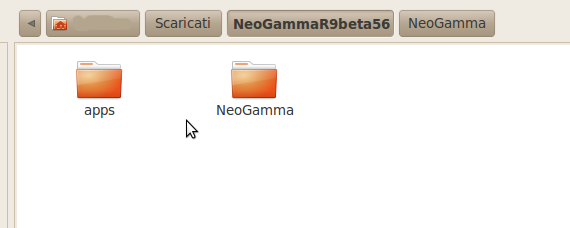

It uses a microkernel architecture, where independent processes communicate using a standard file API (open/read/write/seek/ioctl/ioctlv/close) on resources identified by /dev/ entries in a virtual filesystem hierarchy. IOS is a Nintendo-proprietary, embedded operating system. Such IOSes have been marked as shadow versions. Through content sharing, this reduces the storage space required by IOSes, and it reduces the number of IOSes that need to be reverse engineered in a batch update. There are also some cases (mainly in the 4.3 batch IOS update) where some IOS branches have been replaced with copies of other branches, such as IOS33 and IOS34 being replaced with copies of IOS35. Twins are typically built at very similar times, and in some cases, certain modules are substituted, such as FS and FFS being switched. Most twins have identical version numbers for corresponding versions, which makes identifying possible twins simple. These branches are referred to as "twins" on the respective pages about these branches.

Some IOS branches are identical outside of minor build information, such as IOS14 and IOS15. See IOS History for a comprehensive list of IOS slots and versions.

BootMii as IOS is installed as IOS254, which when invoked will subsequently load armboot.bin from the SD card, typically mini).
#Wii ios 56 wad install#
Unused (high) IOS slots are often used to install patched versions of IOS or alternative Starlet software (e.g. IOS slots have title IDs 1-3 through 1-255.
#Wii ios 56 wad Patch#
Due to this design, it is generally considered safe to uninstall, reinstall, or patch an IOS or IOS module, as long as it is not the slot used by the System Menu - if anything goes wrong, the broken version can be safely uninstalled and a vanilla copy reinstalled. On a Wii, these are installed as separate titles, often called "IOS slots". A fully updated Wii contains one copy of the latest version of each branch of IOS. Each branch is apparently specified to have a completely frozen API, and old versions are only updated to patch bugs (often security bugs) - Nintendo at one point created an entirely new IOS branch that differed only in the default value for the TCP buffer size. Instead of there being a single canonical version of IOS, there are multiple branches, each typically corresponding to one or more versions of the Wii SDK. IOS is versioned in a somewhat unique way. The IPC SDK library seems to have copies of some IOS syscalls such as IOS_AllocAligned this may mean IOS was originally planned to be part of the SDK, but that was scrapped when there was no way to keep that secure. When the Wii is in WiiConnect24 standby mode (yellow LED), the main PowerPC CPU is off, but IOS is still running. Homebrew software will often run under a relatively large range of IOS versions, sometimes constrained by requiring newer features (e.g. Since the IOS API is largely forwards-compatible, it is often possible (though not recommended) to run official software with an alternate IOS branch or slot BC-NAND takes advantage of this so that IOS does not need to be reloaded a second time every time a title is launched.
#Wii ios 56 wad code#
In that sense, IOS is higher in the security hierarchy than code running on the PowerPC. However, IOS does isolate its memory from access by the main Broadway CPU, has the ability to reboot (and hence bootstrap) it, and is designed to be secure if the PowerPC side is compromised (although in practice many exploits have been found). IOS is not a "hypervisor", as it runs on a dedicated, separate CPU. Typically, the only times IOS is not in use is when running GameCube software (which uses MIOS instead - effectively a dummy IOS), or when BootMii and related software is in use (which uses mini instead). It provides services that are used by Wii code to access many system devices: USB, networking, security, app management, NAND flash storage, SD card, optical disc, and also WiiConnect24 features.Īll software using the Wii SDK or libogc relies on a running IOS on the Starlet (with a few exceptions in the latter case - it is possible to shut down IOS services from libogc and work without it). IOS (sometimes internally referred to as IOP - possibly "Input Output Proxy") is the operating system that runs on the Starlet (IOP) coprocessor ( Starbuck on the vWii) inside the Hollywood package. Not to be confused with Apple's iOS, which runs on the iPhone, which was released half a year after the Wii, or IOSU, which runs on the Wii U, sometimes referred to as IOS.


 0 kommentar(er)
0 kommentar(er)
